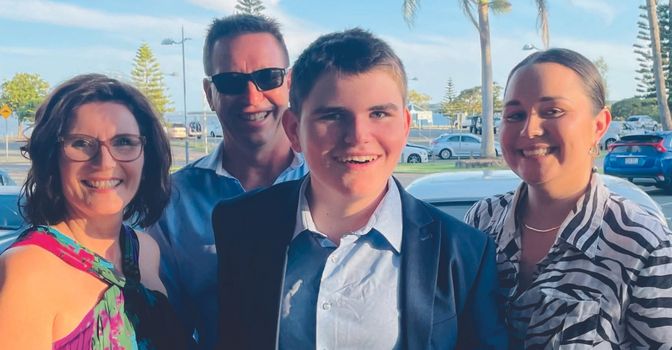It’s that time of the year when school has almost finished (or is done and dusted) and many families are wondering ‘what’s next?’ for their loved ones.
We recently came across an insightful story by Fiona Lawton in Source Kids magazine that we wanted to share.
In this edited extract, Fiona explains how her family created a ‘purposeful plan’ for life after school for her son.
Starting the post-school transition early.
You can be mistaken for thinking that post-school transition starts when a young person finishes school but the reality is, all young people need to start to contemplate their post-school pathways in year 10.
This might include making subject selections for senior years to ensure they get into the university course of their choice, considering vocational training pathways, job options or even toying with the idea of a gap year.
My son has a rare neurological condition called Angelman syndrome, with severe intellectual disability and is a non-speaker. He had attended a special school for all his education and we knew that there were limited options with mainstream services for post-school employment or tertiary study.
That didn’t mean we didn’t have to plan for his future – in fact, it meant that we needed to get creative.
Finishing school was going to be a huge transition for him, given his sense of community and connection over 13 years of school, and the safe, controlled environment that he was familiar with.
Research shows that people with intellectual disabilities can experience severe anxiety and depression if a change is not managed well. Our son needed to belong to a community that was outside of his school connections. He needed to make friendships and have regular activities that would see him through into adulthood – just as his siblings had done by being members of the local sports and dance clubs.
Many of the questions we found ourselves asking were the same that we had asked his brother and sister – what were his interests, where was he going to live, how was he going to support himself and who was going to help him?
And so began our 5-step “Post-School Project”.
The 5-step Post-School Project.
Step 1: Start planning.
Plan to be available to help your loved-one transition. While a change of career or work schedule may not be possible for everyone, taking some leave or increasing family and/or funded support may help smooth the transition for you all.
Step 2: Adjust your transition timetable to work for you and your family.
If your loved one is thriving at school and well-connected with friends, plan for them to all transition together.
If your loved one is not ready to leave school due to emotional preparedness, lack of post-school options, family needs, or skill development, explore if they can repeat a year.
If they are ready to leave school, start a purposeful transition in collaboration with outside services and school, with the aim to gradually reduce school-based activities and attendance.
In year 10, we connected with two disability services that supported teenagers and young adults in the home and with social and community access. Our emerging young adult started attending on weekends and this gradually increased. By the end of year 12, he was attending school two days a week and doing a range of activities including sailing, gym and life skills training on the other days.
Step 3: Prepare a tapestry of options.
While school is a “one stop shop” of services, life in the post-school world does not necessarily need to look the same.
In year 12, we did a Good Life Planning session for our son as a family. It highlighted his need to feel a sense of belonging and community, his love of live music and musical theatre, a desire to continue to learn, and the critical need for ongoing age-appropriate connection with his peers.
No ‘one’ service could offer all that we were looking for, so we connected with a range of providers to create a rich and varied program.
Step 4: Plan reassessment.
Not everyone receives NDIS support, but if your loved one does, it is likely you will need to an NDIS plan reassessment due to the change of situation. Consider starting the process midway through year 12.
You may need to consider housing – is your loved one staying home or moving out into supported independent living? Are individualised living options something to consider?
If they are looking for a job, applying for school leaver employment support (SLES) funding is imperative in the last year of school or first year out. It is typically funded for two years and for NDIS participants up to the age of 22.
If they are undertaking study, being aware of mainstream services and supports is really important. The NDIS cannot, and will not, provide for everything.
Finally, what are their self-care and daily needs and what informal supports are going to be able to assist moving forward?
Step 5: Participate in rites of passage.
By far the best part of our transition were all the celebrations, moments of pause and reflection, and the big graduation – I still smile thinking about it. Our son’s formal, with the photos by the bay, the convoy of limousines and fancy cars, and the awards ceremony is a night I will never forget.
He certainly knew there was something special happening, and he grew in stature, confidence and pride with every step. From the suit fitting and shoe shopping to the ‘Guard of Honour’ at the final assembly, our son’s face conveyed the pure delight of this most important rite of passage.
Fiona Lawton is National President of the Angelman Syndrome Association Australia and owner and director of Neu Pathways Australia. This story first appeared in Source Kids Issue 32, Spring 2022 edition.

